- News
- Reviews
- Bikes
- Components
- Bar tape & grips
- Bottom brackets
- Brake & gear cables
- Brake & STI levers
- Brake pads & spares
- Brakes
- Cassettes & freewheels
- Chains
- Chainsets & chainrings
- Derailleurs - front
- Derailleurs - rear
- Forks
- Gear levers & shifters
- Groupsets
- Handlebars & extensions
- Headsets
- Hubs
- Inner tubes
- Pedals
- Quick releases & skewers
- Saddles
- Seatposts
- Stems
- Wheels
- Tyres
- Tubeless valves
- Accessories
- Accessories - misc
- Computer mounts
- Bags
- Bar ends
- Bike bags & cases
- Bottle cages
- Bottles
- Cameras
- Car racks
- Child seats
- Computers
- Glasses
- GPS units
- Helmets
- Lights - front
- Lights - rear
- Lights - sets
- Locks
- Mirrors
- Mudguards
- Racks
- Pumps & CO2 inflators
- Puncture kits
- Reflectives
- Smart watches
- Stands and racks
- Trailers
- Clothing
- Health, fitness and nutrition
- Tools and workshop
- Miscellaneous
- Buyers Guides
- Features
- Forum
- Recommends
- Podcast
feature
Endurance Bikes vs Gravel Bikes - What are the differences and which is best for you?
We made a video explaining the differences between a road race bike and an endurance bike and the comments section was littered with literally a few of you asking us to make a similar video comparing endurance bikes and gravel bikes. Well, ask and you shall receive.
But before we start delving into the details, it may well be helpful for some of you if we have a look at what gravel bikes and endurance bikes actually are.
An endurance bike sits in the road category. It is generally considered to be something that is designed for comfort and efficiency over longer rides and for this reason, these bikes are very popular with recreational and club road riders.
A gravel bike, meanwhile, is a bike that is designed primarily to be capable on unpaved gravel tracks. 'Gravel bike' is, to be honest, a bit of a null and void term these days because, like the term ‘road bike’, it encompasses too many niches. There are gravel bikes for super-keen racers, people that want to go cycle camping and there’s even a gravel bike type called monster gravel bikes. They’re for ridiculously gnarly stuff.
In fact, there are often rather large overlaps in real-world user cases when it comes to gravel and endurance bikes. This is most commonly seen when you take the more relaxed end of the endurance bike market and the more road-orientated end of the gravel bike market. And it is also well worth mentioning that both bike types are very popular with commuters.
But the basic premise is that an endurance road bike goes a long way on the road in comfort and a gravel bike opens up the stuff that you can’t do on a road bike.
Tyre clearance
First up, we have the most easily identifiable difference. Tyre clearance. This is the space in the frame and fork for tyres. The bigger the clearance above and to the side of the tyres, the wider the tyre that you can fit.
Tyre clearance matters because it is the main determining factor as to what terrain your bike can comfortably take you over. A super speedy aero race bike won’t have that much tyre clearance - it’ll be about 30mm max - as these bikes are ridden exclusively on paved roads, they don’t need more. At the other end of the extreme, a mountain bike can boast clearance for tyres over 70mm wide. They need the extra tyre volume for riding over massive rocks and all of that scary-looking stuff that mountain bikers do.
However, there’s a catch. Once you go wider than 28mm, a tyre will start to become more of a drag, with the extra rolling resistance slowing you down. So for something like an endurance bike, which is designed to efficiently eat up miles on the road, a balance needs to be struck between efficiency and comfort.
Most endurance road bikes will give you room for up to a 35mm tyre, allowing you to churn out the road miles in plenty of comfort. But there is a secondary benefit to this extra space around the tyres. Many endurance bikes are bought with year-round riding intentions and as a result, riders will be looking to fit mudguards. We’re not sure if this is a particularly British thing to do, but seldom is there a British winter club run without a collection of rattling full-length mudguards. It’s one of the best things about winter.
A gravel bike is destined for rougher surfaces and to smooth out the ride, wider tyres are needed. You’ll generally find a gravel bike giving you room for anything up to a 57mm tyre, though that can vary quite a bit depending on the purpose of the gravel bike in question.
Wheels
Another difference comes at the wheels with gravel bikes deciding that they want to be extra difficult and have two wheel sizes that they can use. Yea. Way to make this even more confusing.
The standard is a normal 700c wheel, but given the extra tyre width that a gravel bike uses, it’s a good idea to pair that with a wider rim than you’d find on the average road bike. Gravel wheels will often have an internal rim width - that’s the measurement from bead hook to bead hook - of around 25mm. This allows the tyre to sit on the rim with a straighter sidewall, giving you maximum width for your tyres, allowing you to run them at lower pressures, and there are also said to be some improvements to tyre feel in the corners.
But then some bright spark decided that a gravel bike could benefit from a 650b wheel. What in the world is that, I hear you ask. It is simply a smaller diameter wheel and the benefit is that it means some gravel bikes allow you to run an even larger tyre.
This is great over the roughest ground as the massive tyre volume soaks up the worst of the impacts from rocks and roots.
> 10 best road bike and gravel bike wheels 2022
Endurance bikes, meanwhile, stick with the normal 700c wheel and you’ll often find the rims measuring 19-23mm internally. Aluminium and carbon are both used for rim construction, so there’s no difference there.
Geometry
A more subtle difference comes in the way that the frames position you. An endurance bike will generally feature a taller head tube than a road race bike to put you in a slightly more upright position. But seeing as these bikes are designed to be efficient over long road rides, aerodynamics does matter and so it’ll still put you in a sporty riding position. These aren’t full sit-up-and-beg bikes like tourers.
The wheel base will be lengthened for a bit of stability and the seat tube and head tube angles will be slack enough to calm the handling, but not so slack as to make it dull.
> How to read a bike geometry table: the numbers made easy
A gravel bike’s geometry, meanwhile, will depend on what it is designed for. A gravel race bike like the Specialized Crux will be long and low, with a relatively tight wheelbase to keep it reactive. A gravel bike which is aimed at adventure riding, meanwhile, will be designed for stability, so the wheelbase will be longer and it’ll get slacker head tube and seat tube angles.
To give a practical example, let’s take a quick look at the Trek Domane, an endurance road bike, and the Trek Checkpoint, the brand’s gravel bike. The Domane is 29mm shorter in reach and 4mm taller in the stack. Its head angle is 0.5 degrees slacker while the seat angle is 0.5 degrees steeper.
The gravel bike gets longer chainstays to accommodate the bigger tyres, while a bigger stack and a higher BB drop are needed to aid clearance.
While it is hard to generalise for a gravel bike, we will say that both these, and endurance bikes, are far more suitable for those looking for a comfortable riding position than a road race bike.
Mounts
Gravel riders often want to take everything and the kitchen sink with them when they go for a ride, so many gravel bikes will be equipped with numerous mounting points for racks and frame bags. In more extreme bike packing cases, you’ll find mounting points on the fork legs, the top tube, under the bottom bracket and at the back of the bike too.
Mounts on endurance bikes are generally more limited to mudguard eyelets, though if you find some additional bottle cage bolt holes under the bottom bracket, then this can be a great place to store a tool and a spares bottle, and we’ve seen mounts on the top tube for a small bag. You can never have too many places to store snacks.
Gearing
Here is where we have a clear difference. Gravel bikes mostly feature a 1X drivetrain with gears that you might think belong on a mountain bike. This is where you have a single front chainring and a wide-range 10-41 tooth cassette. Endurance bikes, meanwhile stick with a traditional 2X drivetrain that you’d usually see on a road bike.
A gravel bike will tend to be ridden on terrain that causes greater fluctuations in speed, so you can get away with having bigger gaps between the teeth on the cassette as you don’t need to account for keeping a perfectly even cadence.
> How to get ultra-low gearing for gravel bike adventures
Gravel bikes are also generally geared to make it easier for riders to get up steep gradients. Gravel climbs can be very technical…and therefore slow so small climbing gears are going to be very useful if you want to avoid walking. This sometimes comes at the detriment of top-end speed, for example my gravel bike tops out at about 50kph before my legs are a blur.
While some endurance bikes, like Vielo’s, have embraced 1X drivetrains, most stick with a 2X setup, with similar gearing to a general road bike. At the front, you’ll often find what is known as a compact chainset, with 50/34 chainrings and at the back, the spacing of the cassette is kept a lot closer than a gravel bike, with 11-34 and 11-36 tooth cassettes a common sight on newer endurance bikes.
That said, we’d say that the coming years will see an explosion of bikes using Classified’s PowerShift 2-speed hub gear to get the benefits of both systems.
Clutch
And then if you look closely at the rear derailleur, you might notice something different about a gravel bike. They tend to feature a rear derailleur with a clutch system. This helps to limit the movement of the pulley wheel cage when your bike is being shaken over rough terrain.
The benefit of this is usually a reduction in chain noise as it won’t be slapping around all over the place and it can also help to keep the chain on the chainrings, which is ideal. We don’t see a clutch system on all bikes as it adds drag to the system so you’ll only find them on bikes where it’s absolutely necessary.
Which is better?
Which bike is better for you will come down to a number of factors, with the primary consideration being where you want to ride the bike. Endurance bikes can handle some light gravel duties, and a gravel bike is still capable of being ridden on the road, but the gravel bike will be able to handle more off-road terrain, while the endurance bike will eat up miles with more efficiency.
Both will generally be more comfortable, and suitable, for the average cyclist than a road race bike, but if we’re to make this as simple as possible, if you like riding in comfort on the road, taking in the occasional canal towpath, then get the endurance road bike.
If you want to be able to get away from the road and ride wherever the feeling takes you, then a gravel bike is going to be more suitable thanks to lower gearing, more mounts and larger tyre clearances.
Latest Comments
- David9694 3 sec ago
"Babergh District Council said it had been "clear throughout" that it "had no option but to introduce charges" and could not afford to continue to...
- jrg_uk 16 min 49 sec ago
The Benelux cycling (and pedestrian) tunnel was, as I understand it, built as an access tunnel but also to do double duty when not needed for...
- Pub bike 36 min 31 sec ago
Maybe it is the latest ruse for insurers to avoid payouts saying "You didn't tell us that you took the key out of the lock so we're refusing your...
- Pub bike 52 min 25 sec ago
That idea has gone out of the window. The new idea is that if you see a cyclist you honk your horn and watch what happens. It ended very badly in...
- KDee 3 hours 55 min ago
I'm still running an ELMNT BOLT V1, and I've never really understood the LED's. I'm sure I configured them for HR zones, but never really look at...
- chrisonabike 3 hours 58 min ago
Mostly agree. Although ... high level sport is complicated. It's not wrestling exactly, but there sometimes seems to be more than a little...
- don simon fbpe 5 hours 21 min ago
Why is this not the will of god?
- hawkinspeter 8 hours 24 min ago
PKD foresaw it, though his novel was based on a different outcome of WWII, not the precursor to WWIII. Maybe the Idiocracy film is a closer fit?
- OnYerBike 10 hours 27 min ago
@Sredlums: I'm not sure I follow your logic. If someone grabs your helmet twists it, then the reason it doesn't feel good is because the outer is...
- Rapha Nadal 10 hours 27 min ago
Coming to the mid-paced Saturday club ride soon.
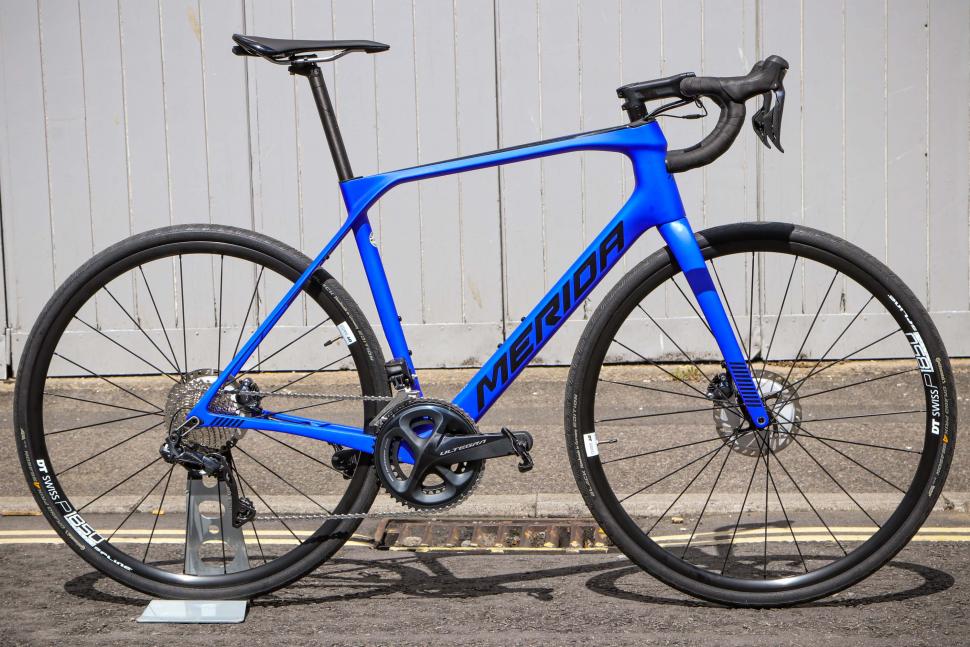
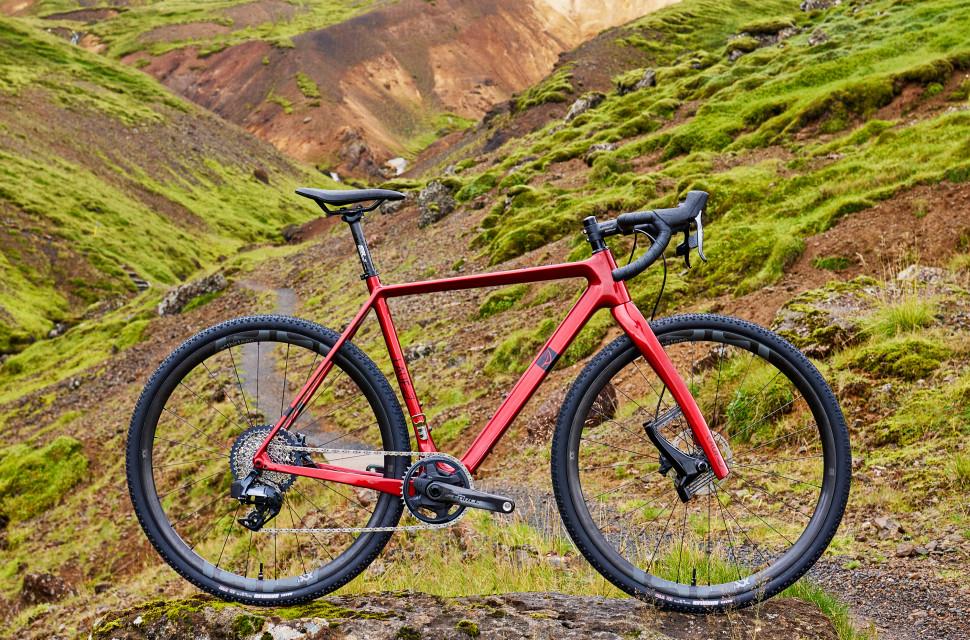

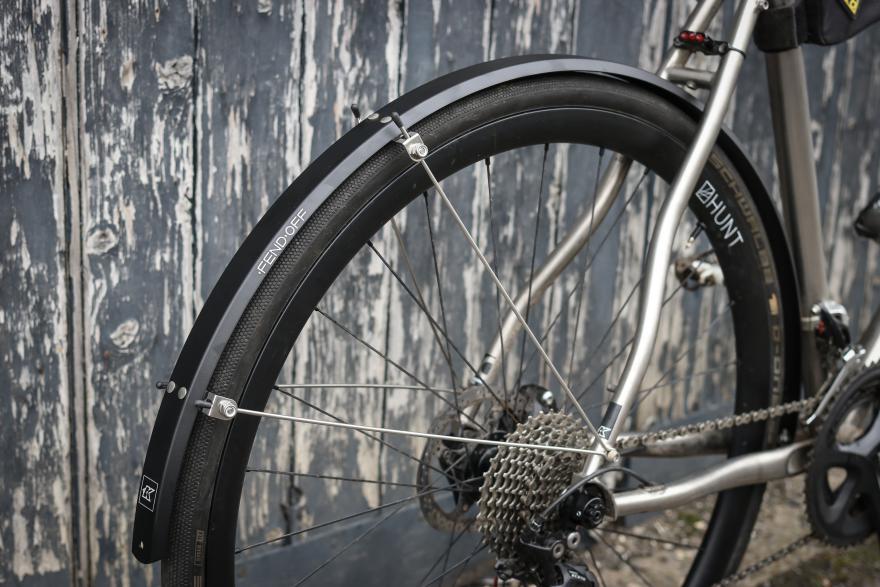
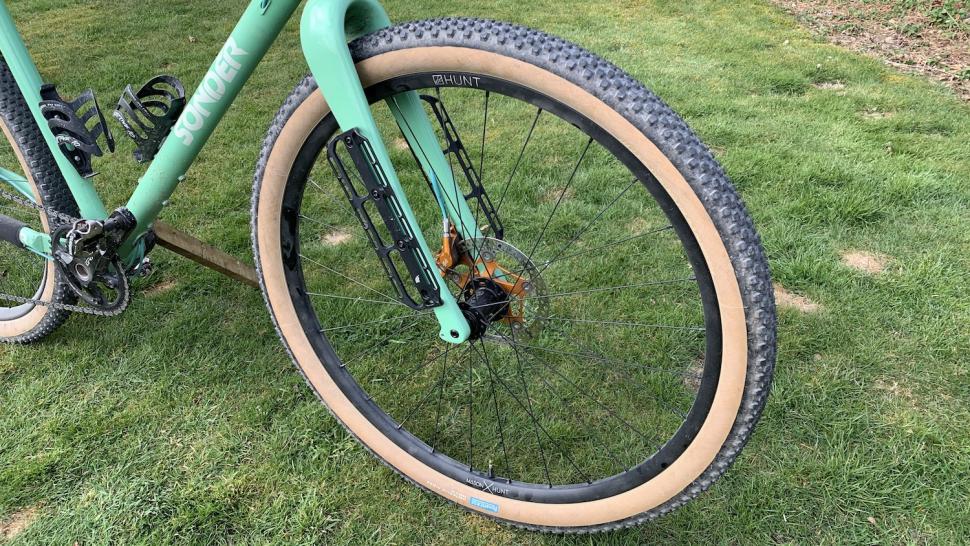


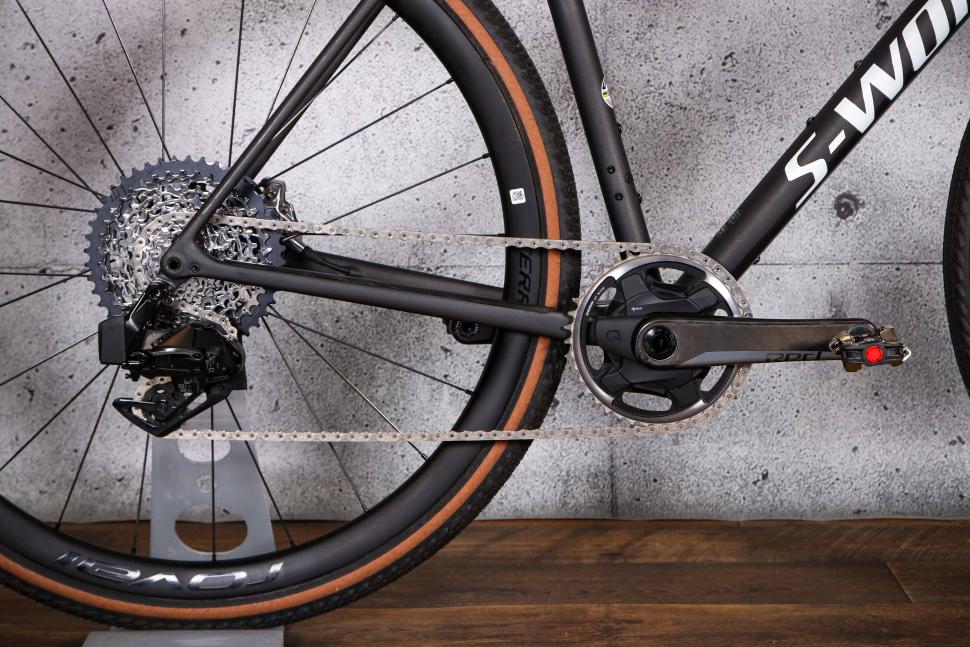
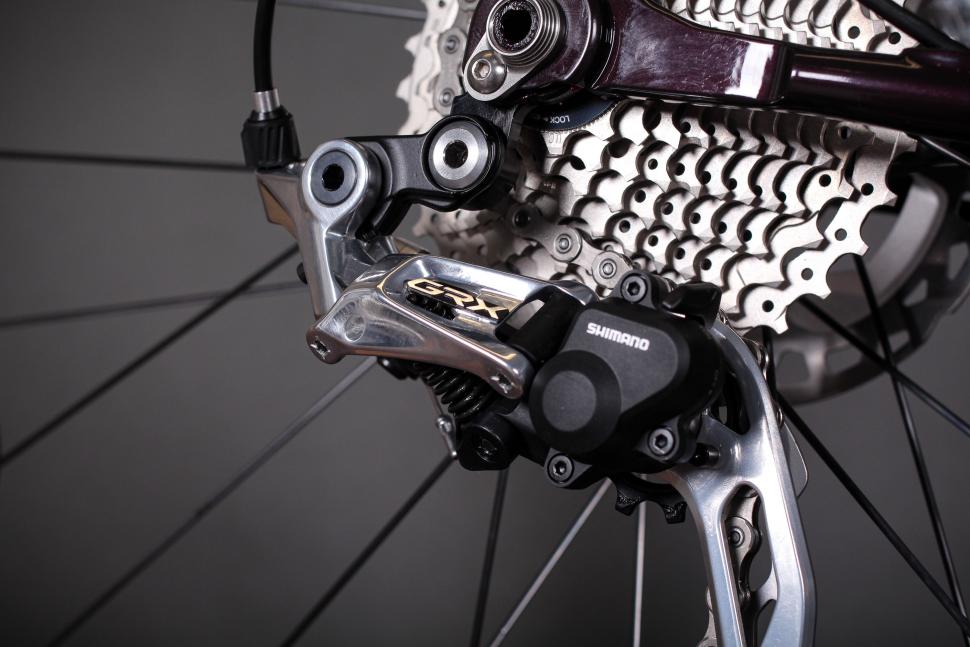
Add new comment
2 comments
It is a very good step from bike industries to help commuters and developing the last years gravel bikes and endurance bike. Bike guys take another step and give more cheap bikes with basic transmissions in these categories with taller headtubes and us lazy guys will be even happier.
Given that winter riding on road is often not far off a gravel ride, as cars pull the soft verges onto the road when squeezing past other road users and potholes generate gravel, leaves and other detritus gather on the road, the extra roadholding of a gravel bike makes them an ideal winter bike.
With recent endurance bikes drifting towards gravel capacity on tyres, which is the main defining difference, winterizing an endurance bike is less traumatic than it used to be (my 2017 Giant Defy could not accommodate full mudguards and had no front mudguard mount point in the top of the fork, and maxed out with 25mm tyres with Crud roadracer guards) but gravel bikes make perfect winter road bikes, they are designed to get wet and muddy, endurance bikes can still be delicate.
The path I've gone down, after struggling to find a year round solution is 2 bikes, light weight endurance and gravel with two wheel sets, one with 32mm roadish tyres, with full Flinger mudguards for winter, and 42mm no guards for gravel riding. This setup also allows me to leap on the gravel bike on any summer rides where the roads are wet or showers are expected.